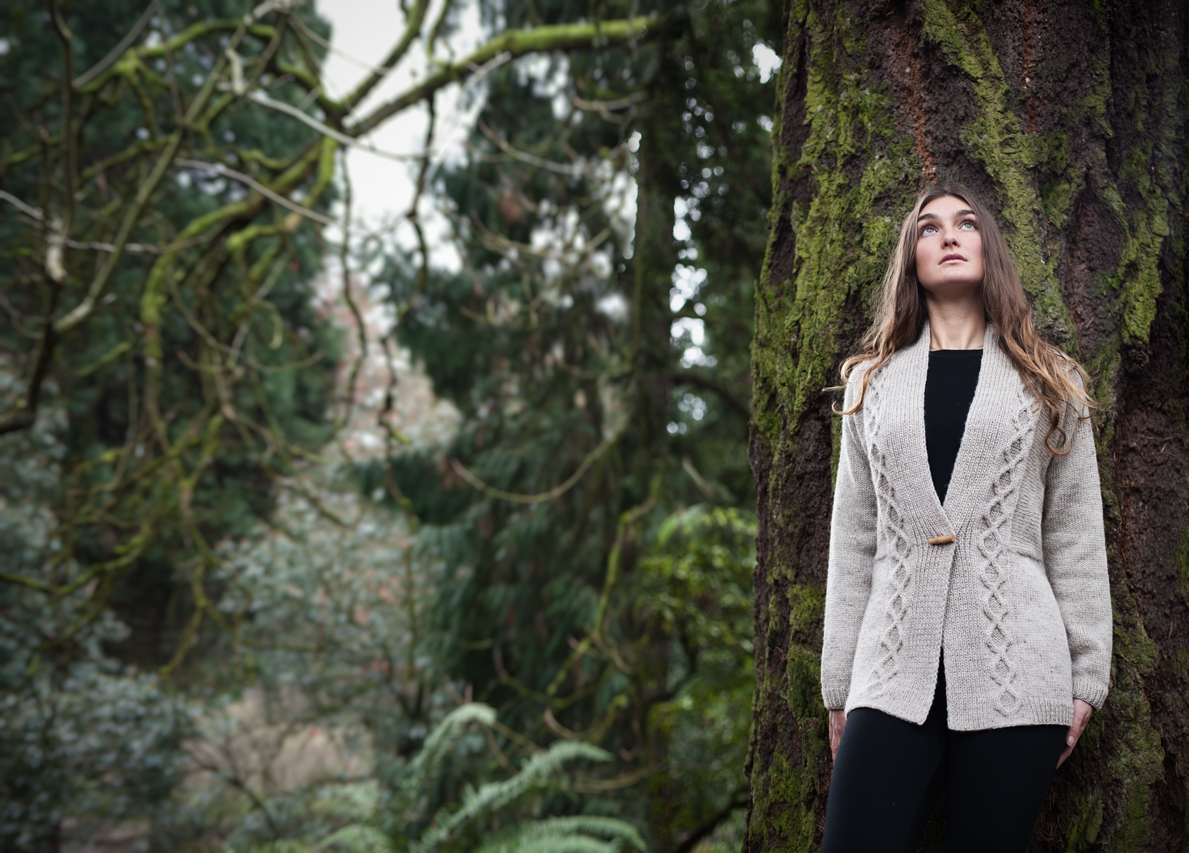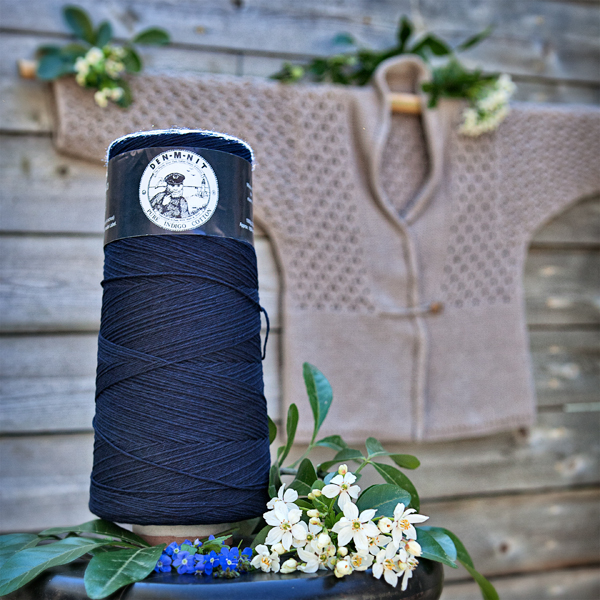This is, perhaps my favorite time of the year.
Spring brings a fresh start to almost everything. You can almost witness the changes in real time here in Portland – everywhere you look, something is bursting fresh. OH, the colorful blooming bushes, things poking up through the ground and that so very green Pacific Northwest landscape – it’s a beautiful momentum that just can’t be ignored.
Fueled up by this incredible energy, it was easy to dive into that Den-M-Nit yarn and cast-on my Cerisara cardi.
It’s been a little bit of a learning curve to here but wow, I actually think it’s going to work:

I’ve had lots of fun getting to this point! I love learning new things, especially when it comes to knitting. And gardening and yes, even photography. This project has everything!
Because I’ve been surrounded by blooms everywhere lately, I’ve been adding them to my knitting pictures a lot and if you follow me on Instagram, you know that I’ve been enjoying it so much.
So pretty AND it keeps track of what was going on in my garden. :)
Here you see something I planted last fall – a blue potato vine (Solanum crispum ‘Glasnevin’) and some chartreuse naturalized coral bells that are popping up along the side of my house.
My Knitting Progress
Chic Knits Cerisara has a built-in neckband with a modular construction that adds areas as you go. So far, I’ve completed the upper Back section of the sweater and the Left Front.
Right now I’m working on the Right Front – am now a few inches in and it’s just a few more pattern repeats to where it all really comes together. All three segments are worked to the same point then joined for the lower Body.
But is it coming out like I expected?
Now, I am a total newbie when it comes to working with indigo yarn. But at the end of the day It’s Just Cotton.
I knew the big diff was maybe the color coming off on my hands (stay tuned for part 3 of the saga where we take a look) but I also knew after a few rows that this yarn felt much like other cellulose fibers I’d worked with in the past.
And here was where I hit my first glitch, where even though I’ve had an experience before, I forgot to learn its lesson.
On my first try (yes, what you see above is Try #2), I cast on using nickel needles. I was concerned with the color migration and thought I’d be able to bypass it with that type of surface.
But what happened was even though my Stockinette swatch was great, the tension of the lace patterning once several inches of the cardigan were done was just a bit loose for me. Since I never have been shy about re-do’s, it was time to move on to Try #2, this time working with bamboo needles, who have happily brought the fabric back in line.
Bamboo (or a wooden needle) offers a bit of surface resistance to a cellulose fiber like cotton (which can be slippery) and that makes for a more controlled gauge and enjoyable knit.
The Stitch Patterns
Part of picking this sweater pattern was to have something that would show off the natural wear patterns that would happen with a surface-dyed yarn like this.
I wrote in [part 1]: “The best kind of design for this variable fading fabric is something
that has Highs & Lows.”

This is a close-up of the upper Left Front. You can see the lace pattern developing and how it merges in the neckband area. Lovely – but how will it fade?
Answer: I can’t wait to wash this – check it out:

Can you see the variations in color already happening? These will continue to fade and overall, the entire fabric will lighten through washing and wearing.
The lace patterning HAS those Highs & Lows it needs and at a smaller scale, so does that field of purl stitches.
I can’t wait to see what happens as it develops its colorful landscape (just like Portland!)
Coming Up in part 3: Colorful and challenging – working with and photographing that incredible Indigo BLUE.
…to be continued…
The Denim Saga
• [part 1] – About that Yarn
• [part 2] – The Sweater Awakens
• [part 3] – Knitting with Indigo Denim Yarn
• [part 4] – Picking Up Stitches using Denim Yarn
• [part 5] – Real-time Shrinkage in Denim Yarn
• [part 6] – the Final Rose – After Shrinking Denim Yarn













